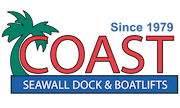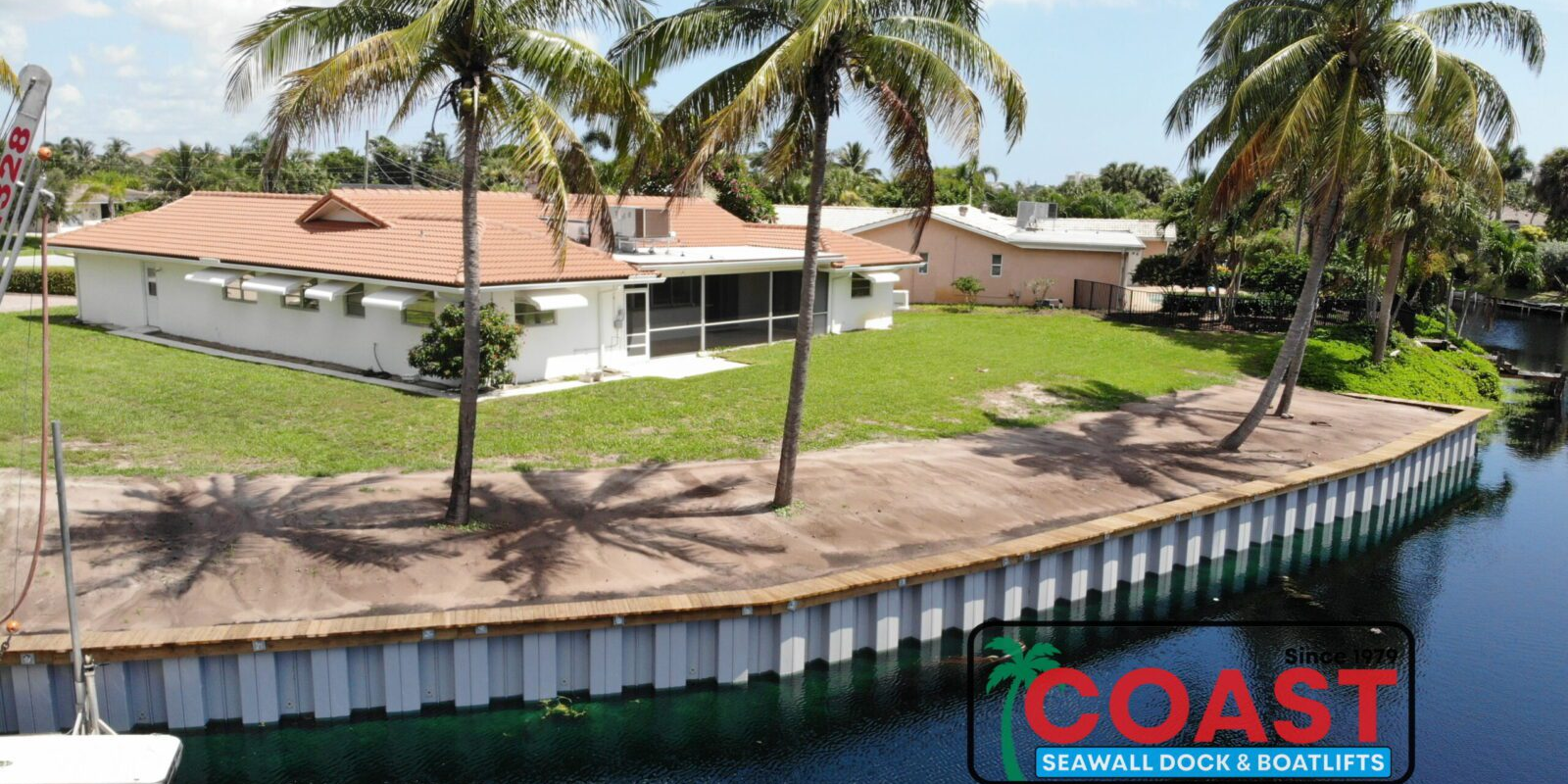Coastal properties face ongoing threats from erosion, storm surges, and rising sea levels. To safeguard shorelines, property owners and planners often turn to protective structures. Among the most common options are seawalls, revetments, and bulkheads.
Each structure has unique strengths, limitations, costs, and environmental impacts. Choosing the right option depends on shoreline conditions, budget, regulatory requirements, and long term goals. Partnering with an experienced seawall construction company ensures the right solution is selected, properly engineered, and built to last. This guide compares seawalls vs. revetments vs. bulkheads, helping coastal property owners and planners make informed decisions.
Why Coastal Protection Structures Are Essential
Shoreline erosion is a natural process but can be accelerated by human activity and climate change. Without intervention, properties and infrastructure near the water may face:
- Loss of land due to erosion
- Flooding risks during high tides and storms
- Damage to infrastructure like docks, roads, and utilities
- Reduced property value from ongoing shoreline instability
Protective structures mitigate these risks by absorbing or deflecting wave energy, stabilizing soil, and creating a controlled boundary between land and water.
Seawalls: Overview and Characteristics
A seawall is a solid vertical or sloped wall built parallel to the shoreline. It is typically constructed from concrete, steel, or vinyl and designed to reflect wave energy.
Key features:
- Strong resistance against powerful waves
- Provides a defined boundary between land and water
- Commonly used in urban waterfronts and high value properties
Pros:
- Highly effective against storm surges
- Long lifespan (30 to 50 years with maintenance)
- Protects property immediately behind the wall
Cons:
- High construction costs
- Potential for beach erosion in front of the wall
- Complex permitting and engineering requirements
Revetments: Overview and Characteristics
A revetment is a sloping structure made of rocks, concrete armor units, or geotextile bags placed along the shoreline. Unlike seawalls, rock revetments construction absorb and dissipate wave energy rather than reflecting it.
Key features:
- Flexible, sloped design
- Often made from riprap (large rocks)
- Blends more naturally with the environment
Pros:
- Lower cost compared to seawalls
- Less impact on natural sand movement
- Easier to construct in less urbanized areas
Cons:
- Requires more space than seawalls
- Can be less visually appealing depending on materials
- May shift or settle over time, requiring frequent adjustments
Bulkheads: Overview and Characteristics
A bulkhead is a vertical wall, similar to a seawall, but typically lighter duty. Bulkheads are designed primarily to retain soil and prevent land loss rather than resist strong wave action.
Key features:
- Made from wood, vinyl, steel, or aluminum sheets
- Often used in calm waters such as lakes, rivers, and canals
- Acts as a retaining wall rather than a full wave barrier
Pros:
- Lower cost than seawalls
- Effective in low energy water environments
- Provides clear property boundaries
Cons:
- Shorter lifespan than seawalls
- Not suitable for high energy coasts
- More frequent maintenance required
Comparison: Seawall vs. Revetment vs. Bulkhead
| Feature | Seawall | Revetment | Bulkhead |
|---|---|---|---|
| Structure Type | Vertical or sloped wall | Sloping armor of rocks or units | Vertical retaining wall |
| Best Use | High energy coastlines | Moderate energy coasts | Calm waters (lakes, rivers) |
| Cost | High | Moderate | Low to moderate |
| Effectiveness | Strong wave resistance | Energy dissipation | Soil retention, mild waves |
| Lifespan | 30 to 50 years (with upkeep) | 20 to 30 years (depending on design) | 15 to 25 years |
| Maintenance Needs | Moderate to high | Moderate | High in harsh conditions |
| Environmental Impact | Can increase beach erosion | More environmentally friendly | Can disrupt natural sediment flow |
| Aesthetics | Urban, engineered appearance | Natural, rugged appearance | Functional, less aesthetic |
| Construction | Complex and regulated | Relatively simple | Straightforward in calm waters |
Cost Comparisons
- Seawalls: $500 to $2,000 per linear foot depending on materials and engineering.
- Revetments: $150 to $600 per linear foot, influenced by rock availability and site access.
- Bulkheads: $100 to $500 per linear foot, but replacement cycles increase long to term costs.
Environmental Considerations
- Seawalls: Tend to reflect wave energy, which can accelerate erosion in front of the wall and reduce beach width.
- Revetments: More environmentally friendly as they dissipate wave energy and allow some natural shoreline processes.
- Bulkheads: Can disrupt natural sediment movement, impacting aquatic habitats over time.
For environmentally sensitive areas, revetments or hybrid approaches (living shorelines combined with structures) may be more suitable.
Construction Complexity
- Seawalls: Require heavy equipment, deep foundations, and professional engineering oversight.
- Revetments: Simpler construction but require proper grading and placement of large rocks or armor units.
- Bulkheads: Straightforward installation in calm waters but less durable in high energy coastal environments.
Aesthetic Considerations
- Seawalls: Provide a clean, urban look suitable for developed waterfronts.
- Revetments: Offer a more natural appearance but may look rugged.
- Bulkheads: Functional but not typically designed for aesthetics.
Property owners may balance aesthetics with performance depending on the setting.
Regional Preferences
- Urban coastal cities: Favor seawalls for durability and space efficiency.
- Residential coastal communities: Often use revetments for a balance of protection and environmental impact.
- Inland waters and canals: Bulkheads are common due to calm conditions and lower costs.
When to Choose Each Structure
- Choose a seawall if:
- You’re protecting high value property on an energetic coastline
- Space is limited and a vertical barrier is needed
- Long term durability is the top priority
- Choose a revetment if:
- You prefer an environmentally friendly solution
- Your shoreline has moderate energy levels
- You want a cost effective and natural looking barrier
- Choose a bulkhead if:
- Your property is on a canal, river, or lake
- Wave energy is minimal
- Budget constraints are a factor
FAQs: Seawalls vs. Other Coastal Protection Structures
1. Which lasts longer: a seawall or a bulkhead?
Seawalls generally last longer, with lifespans of 30 to 50 years, compared to 15 to 25 years for bulkheads.
2. Are revetments cheaper than seawalls?
Yes, revetments are typically less expensive and easier to install but require more space.
3. Do seawalls harm the environment?
They can accelerate beach erosion by reflecting wave energy. Revetments or hybrid approaches may be more environmentally friendly.
4. Can bulkheads withstand strong storms?
Bulkheads are not designed for high energy coastlines and may fail under strong wave action.
5. What is the most eco friendly option?
Revetments or living shoreline solutions tend to have less environmental impact than seawalls or bulkheads.
6. How do I know which structure is right for my property?
Consult a coastal engineer. The best choice depends on shoreline energy, property value, budget, and environmental regulations.
7. Is maintenance easier for seawalls or revetments?
Revetments typically require less structural maintenance but may shift over time. Seawalls need periodic inspections and repairs to address cracks and drainage issues.
8. Can I combine structures?
Yes, hybrid systems are increasingly popular for example, pairing a revetment with vegetation for added stability and environmental benefits.
Conclusion
When comparing seawalls vs. revetments vs. bulkheads, the right choice depends on shoreline conditions, property needs, and budget.
- Seawalls offer maximum durability and protection but at higher costs and potential environmental trade offs.
- Revetments provide a balanced solution with lower costs and greater environmental friendliness.
- Bulkheads are suitable for calm inland waters but not recommended for energetic coastlines.
By weighing factors such as structural differences, cost, effectiveness, maintenance, and environmental impact, coastal property owners and planners can choose the most suitable protection method for long term shoreline stability. At Coast Seawall Dock & Boatlifts, we provide expertise in designing and building solutions that balance durability, functionality, and environmental considerations.








